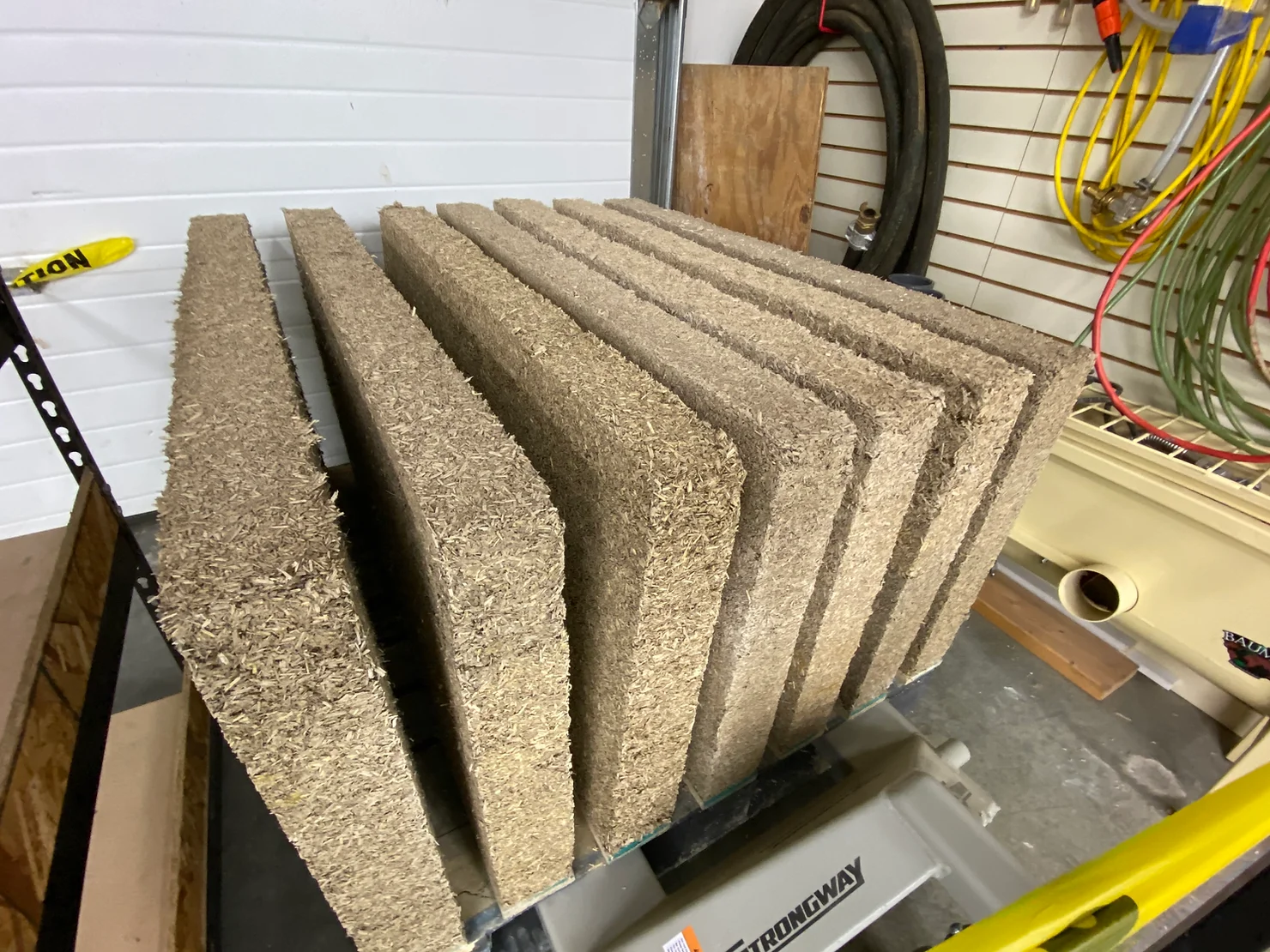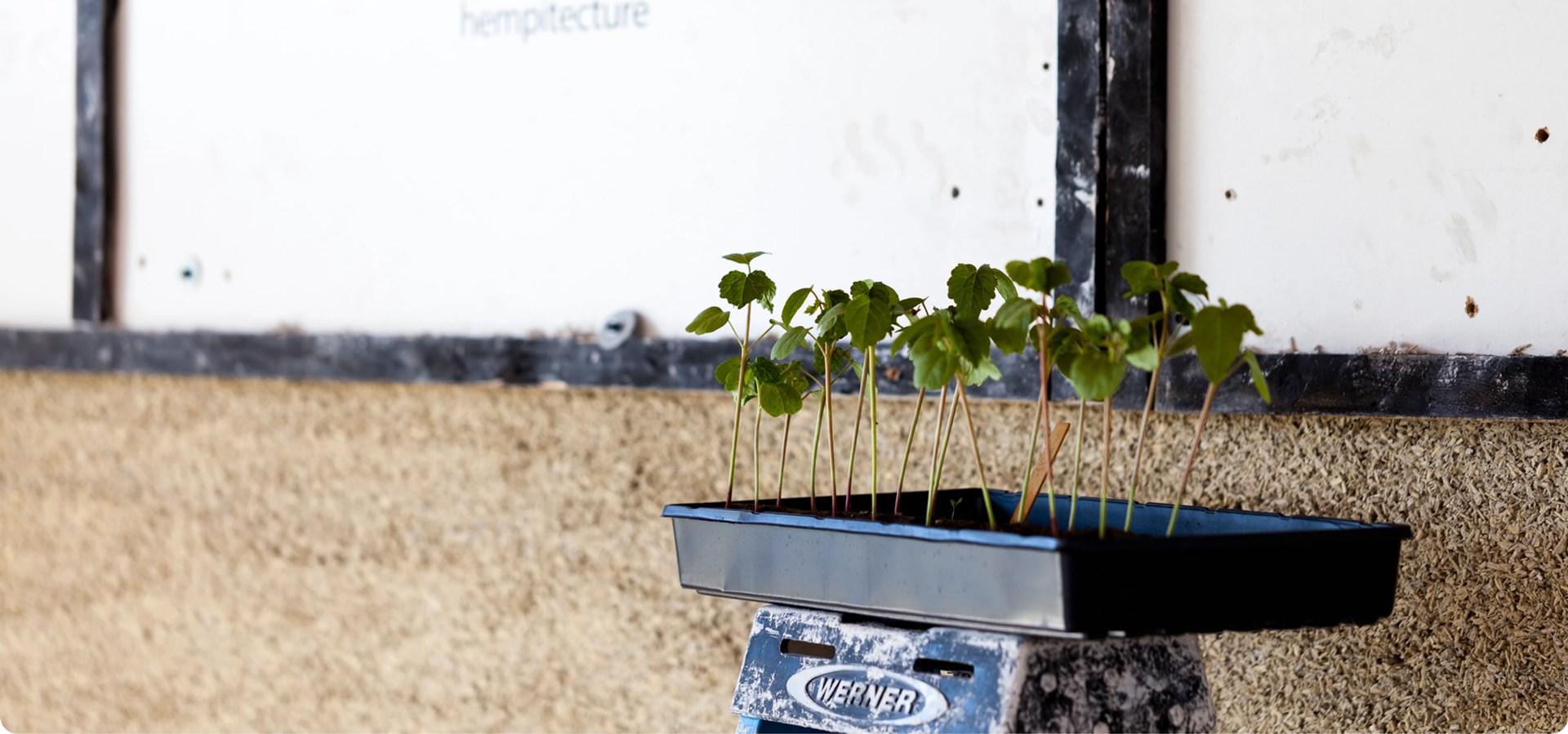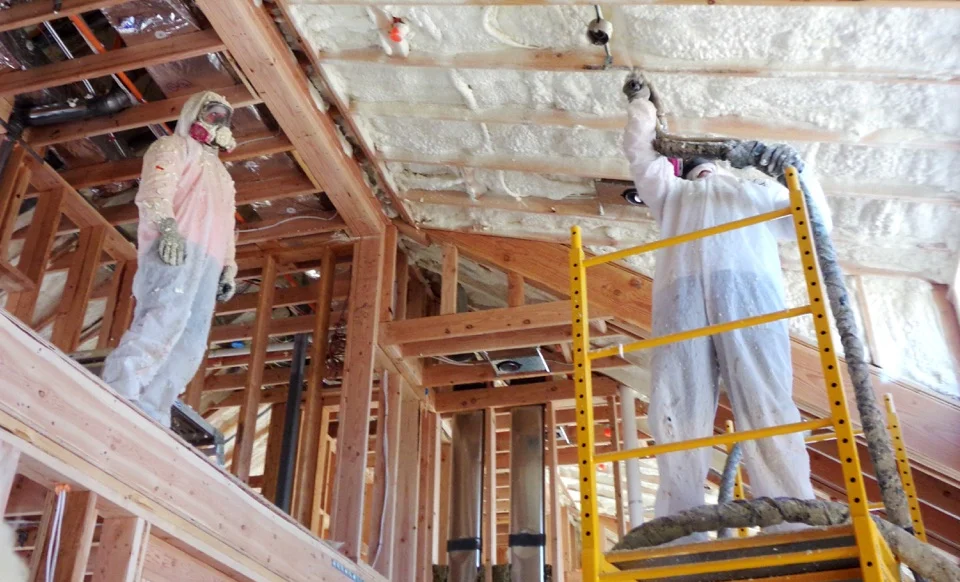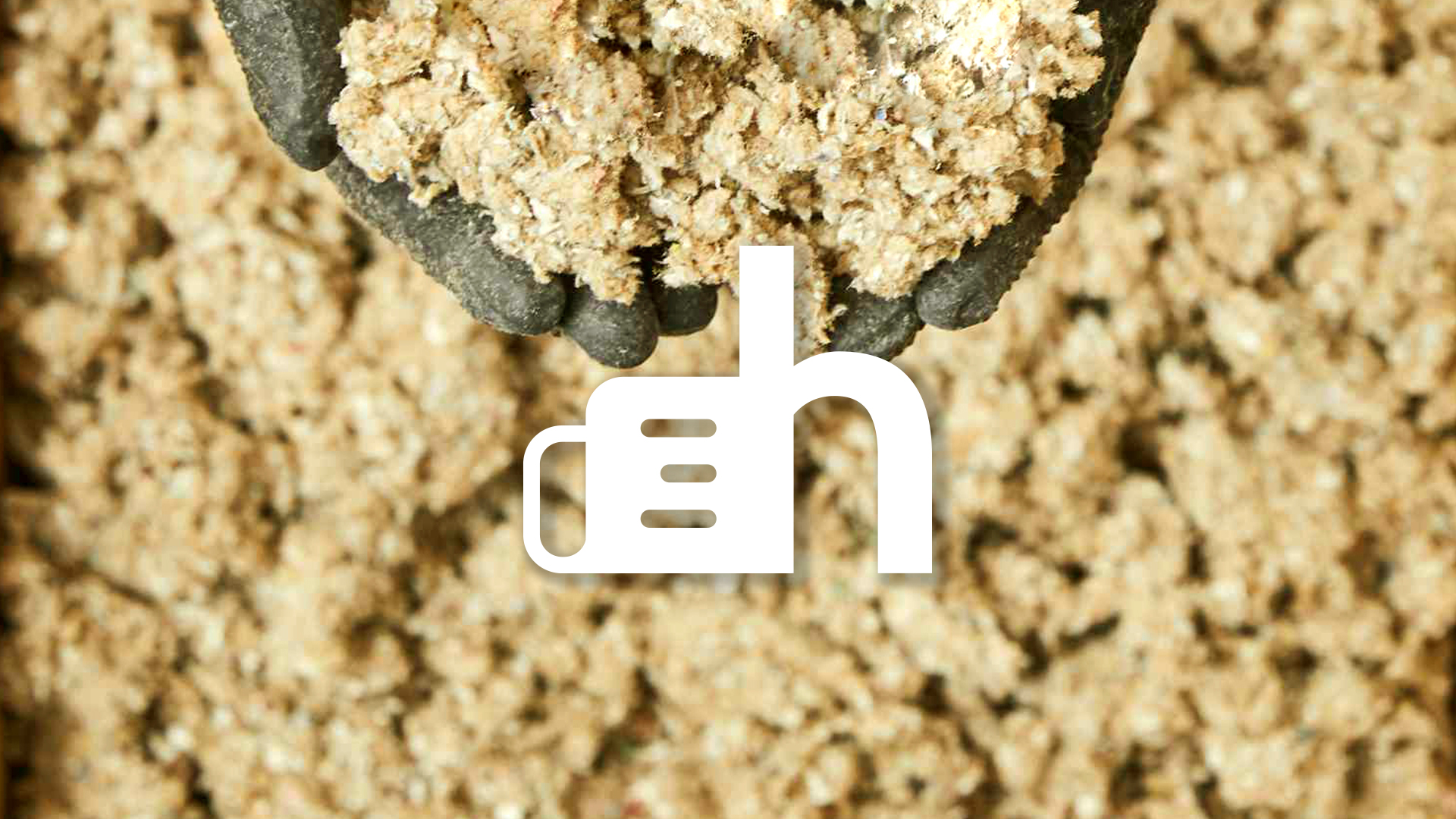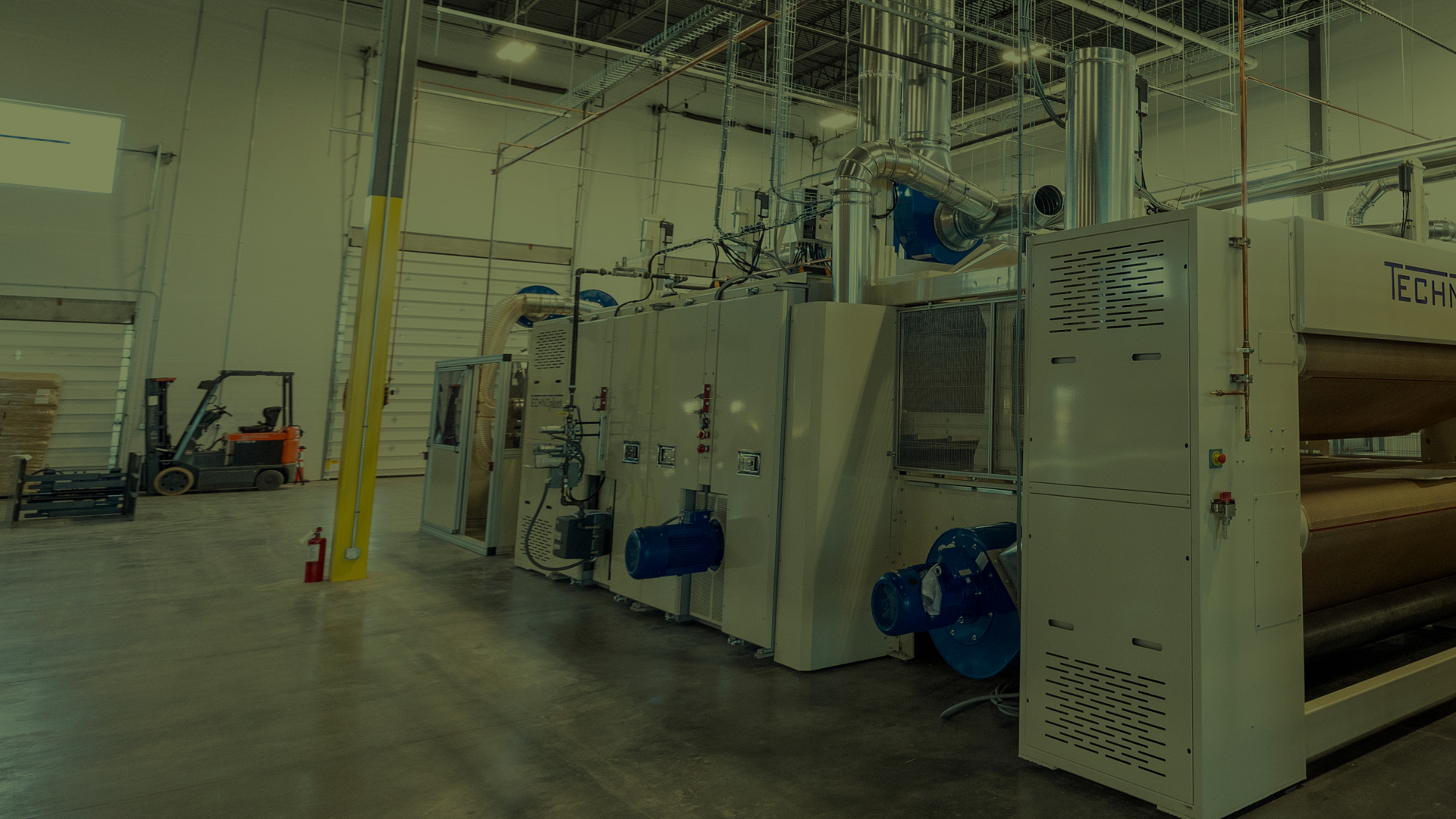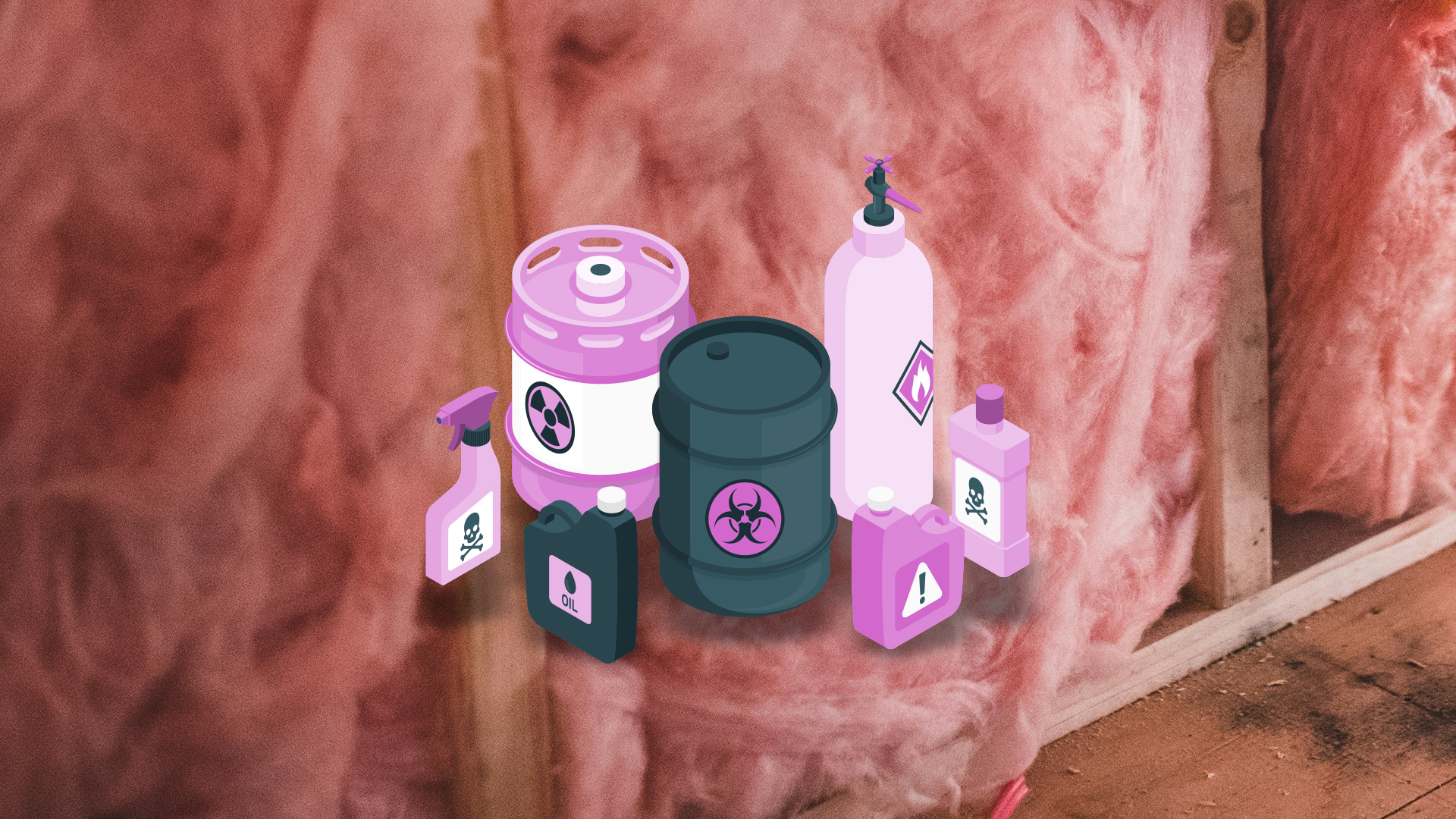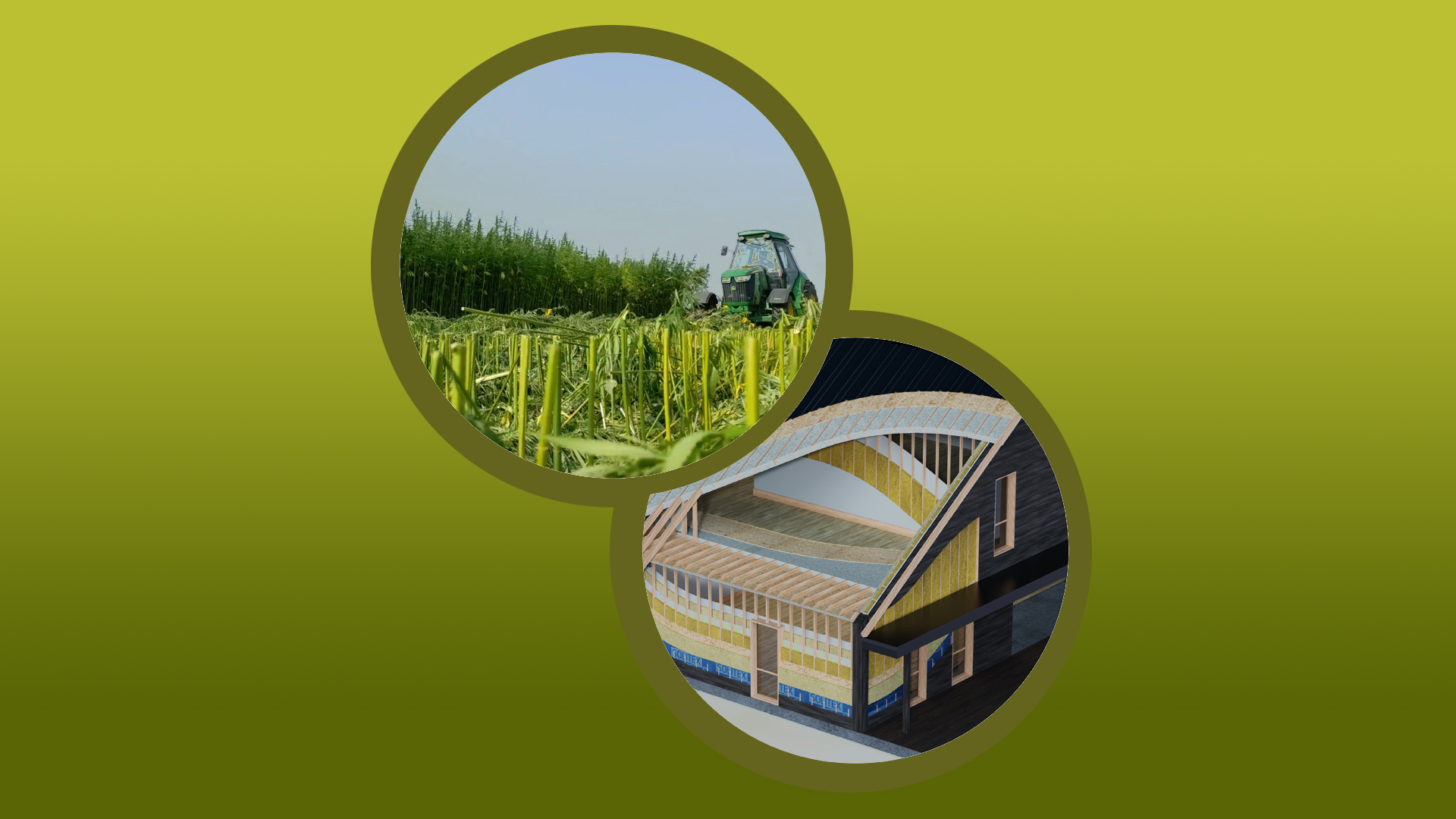Hempcrete, also known as hemp + lime, is a bio-composite building material that combines the inner woody core of the industrial hemp plant with a lime-based binder. Referred to as “Shiv,” or “Hurd,” the hemp core possesses a porous cellulosic structure, enabling excellent binding with lime. While hempcrete is not a replacement for traditional concrete, it is still structurally sound and has good load-bearing capabilities. It is often used in non-load-bearing applications such as interior walls, insulation, and cladding. Hempcrete is also a versatile material that can be used in both new construction and retrofitting existing buildings.
Hempcrete is lightweight, insulating, fire-resistant, and has excellent thermal properties. The. prevalent use of wood stud framing makes hempcrete especially suitable for low-rise residential construction projects.

Why is the binder important in Hempcrete?
The importance of hempcrete binder can never be underestimated. Our products were carefully selected and tested to create long-lasting biocomposites that are resilient, healthy, high-performing, locally sourced, and inexpensive. Hempitecture uses a specifically formulated mineral-based lime binder that is ideal for bonding hemp core for cast-in-place methods.
To produce HempBinder, calcium carbonate (Limestone) is kilned to burn off CO2 to produce calcium oxide. Water can be added to create a “hydrated lime” CA(OH)2 and then the pozzolan is added to the lime to help the hempcrete “set” or harden. The pozzolan used in HempBinder is locally mined pumice which is a naturally occurring volcanic stone in Idaho. This pumice works very well to increase the strength, durability, and workability of our hempcrete allowing a faster setting to take place reducing delays and cracks during installation. Unlike many hempcrete binders on the market, our HempBinder has no Portland cement, natural cement, or additional additives.

What are the advantages of using hempcrete?
Areas of Use: Hempcrete finds application in various building components, serving as self-insulating walls, roofs, and screeds. It seamlessly fits into both new construction projects and renovation endeavors such as retrofitting existing buildings, when the proper conditions for hempcrete such as vapor openness are maintained. As hempcrete is not a structural material, it surrounds a primary or secondary structural frame crafted from timber, metal, or concrete when constructing walls. Additionally, it can act as an insulating lining over standard mineral substrates.
Casting methods: HempBinder is suited for cast-in-place installation methods, where the material is installed inside temporary form boards around a structural frame. It is mixed on-site, and the material is then tamped into place. Prefabricated walls are also possible with HempBinder speeding up the building process while preserving the material’s exceptional thermal and moisture control properties.
Thermal performance: Hempcrete has excellent insulating properties, providing thermal regulation by allowing the building to breathe and reduce moisture build-up. The thermal conductivity of hempcrete is typically in the range of 0.06 to 0.07 W/mK, which is about half the thermal conductivity of concrete. Hempcrete also provides significant thermal mass to a wall which acts as a thermal storage device to buffer the interior air temperature from fluctuations in outside temperature. Finally, because hempcrete can be installed in a way that provides a monolithic surface that buries the structural components of a building, you are reducing thermal bridges inside your wall which are areas of higher heat transfer. This means that hempcrete can help keep buildings cool in the summer and warm in the winter without great energy expenses on heating and air conditioning. In addition to its low thermal conductivity, hempcrete also has a high specific heat capacity. This means that it can store a lot of heat energy, which helps to stabilize the temperature inside a building. This is beneficial because it can help to reduce the need for heating and cooling, which can save energy and money.
Sustainability: One of the primary advantages of hempcrete is its sustainability. We believe your walls should not just keep you comfortable, but also help clean the environment. The materials used to create hempcrete biocomposites absorb CO2 during the curing process. The amount of CO2 sequestered from 1 lb of hempcrete varies, but it is generally estimated to be between 1.2 and 1.5 lbs. This means that a cubic foot of hempcrete can sequester between 19 and 23 lbs of CO2. The exact amount of CO2 sequestered will depend on curing conditions, however, even at the lower end of the range, hempcrete is a very effective way to sequester CO2. Additionally, CO2 is absorbed and offset during the life cycle of the industrial hemp plant. Hemp is a fast-growing plant that requires minimal water and no pesticides or herbicides. Hemp sequesters carbon dioxide from the atmosphere during its growth, making it a carbon-negative material.

It’s important to note that hempcrete is different from PlantPanel (our continuous rigid board exterior application which will be introduced in late 2023) or HempWool, our flagship bio-based insulation. Overall, hempcrete offers a sustainable and environmentally friendly alternative for construction, with its unique combination of insulating properties, breathability, and carbon sequestration potential.
How is hempcrete finished (or rendered)?
Hempcrete is typically finished or rendered using various techniques, depending on the desired aesthetics and functional requirements. Here are some common methods of finishing or rendering hempcrete:
Lime Render: Lime render is a traditional and popular choice for finishing hempcrete walls. It involves applying a mixture of lime, sand, and sometimes other additives to the surface of the hempcrete. Lime render not only provides a smooth and attractive appearance but also enhances the durability and weather resistance of the hempcrete.
Plaster: Plastering the hempcrete surface involves applying a layer of clay or lime plaster. Clay plaster is eco-friendly and breathable, allowing the hempcrete to maintain its natural moisture-regulating properties. Lime plaster, as mentioned earlier, offers similar benefits as lime render and is often used interchangeably with lime render for finishing hempcrete walls.
Paint: Hempcrete can also be painted once the surface is properly prepared and cured. However, it is essential to choose breathable and eco-friendly paints to maintain the moisture-regulating properties of hempcrete. Often this is used for aesthetic purposes, as a lime render or plaster will enhance the air tightness of a hempcrete wall, improving its overall performance.
Natural Finishes: Some people prefer using natural finishes like earth-based or mineral-based paints, which complement the eco-friendly nature of hempcrete. These finishes offer a textured and organic appearance. Similar to paints, these are often used for aesthetic purposes.
Tadelakt: Tadelakt is a traditional Moroccan technique where polished lime plaster is applied to the surface of hempcrete. The polished finish creates a water-resistant and smooth surface, commonly used in bathrooms and other areas prone to moisture exposure.
Oil Finishes: Hemp oil or other natural oils can be applied to the surface of hempcrete for protection and enhancement of its appearance. These oil finishes can deepen the color of hempcrete while still allowing it to breathe.
Rain Screens and Vented Siding: If you are seeking a more common finishing method for the exterior, such as siding, a rain screen detail can be employed which allows the vapor openness of a hempcrete wall to remain. This approach requires less specialized labor than some of the other finishing methods.
It’s important to note that the finishing or rendering process for hempcrete may require some expertise, especially when choosing traditional methods like lime render or Tadelakt. Proper preparation and application techniques ensure the longevity and performance of the hempcrete finish. Consulting with professionals experienced in working with hempcrete can be beneficial to achieve the desired results. While there are many options to finish hempcrete, our recommended finish application is lime plaster from Earthaus.
How is Hempcrete installed?
It’s important to note that the installation process may vary based on the project’s scale, complexity, and the specific techniques employed by construction professionals. Working with experienced contractors, architects, and structural engineers is crucial to achieve optimal results and ensure the building’s durability and performance. Additionally, compliance with local building codes and regulations is essential during the entire installation process.
While there are different installation methods for hempcrete, such as cast-in-place, spray-applied, blocks, or prefabricated wall panels, HempBinder is best suited for cast-in-place and prefabricated wall panel applications. In general, HempBinder and hemp core are mixed on-site, and cast into temporary form boards. Later, the form boards are removed, leaving a beautiful, high-performing monolithic wall.
In conclusion
Hempcrete stands as a remarkable bio-composite building material that embodies sustainability, performance, and environmental responsibility. With its exceptional insulating properties, breathability, and carbon-sequestering capabilities, hempcrete is a game-changer in the world of green construction. By using our specially formulated HempBinder and the industrial hemp core, builders and architects can create energy-efficient, healthy, and aesthetically pleasing structures that leave a positive impact on the planet.
At Hempitecture, we are passionate about revolutionizing the construction industry through the promotion of natural building materials like hempcrete, HempWool insulation, and PlantPanel (coming soon!). Our mission is to empower builders, architects, and eco-conscious individuals with the knowledge and resources to create sustainable spaces that foster a harmonious relationship between humans and the environment.
To learn more about how hempcrete is installed, visit our YouTube Channel as well as read through our Product Guide: Hempcrete for Cast in Place, or check out our Hempcrete Resources page.
You can get a quote for materials and shipping on our buy direct platform: buy.hempitecture.com
Additional Resources:
HavenEarth; The Essential Hemp Building Course
HavenEarth; The Advanced Hemp Builder Course
Healthy Materials Lab; Hemp + Lime
Hemp Building Directory 2023; A comprehensive handbook to the exploding hemp building industry includes: Architects, engineers, hempcrete installers, hemp suppliers, hemp building products, training, and education opportunities.
